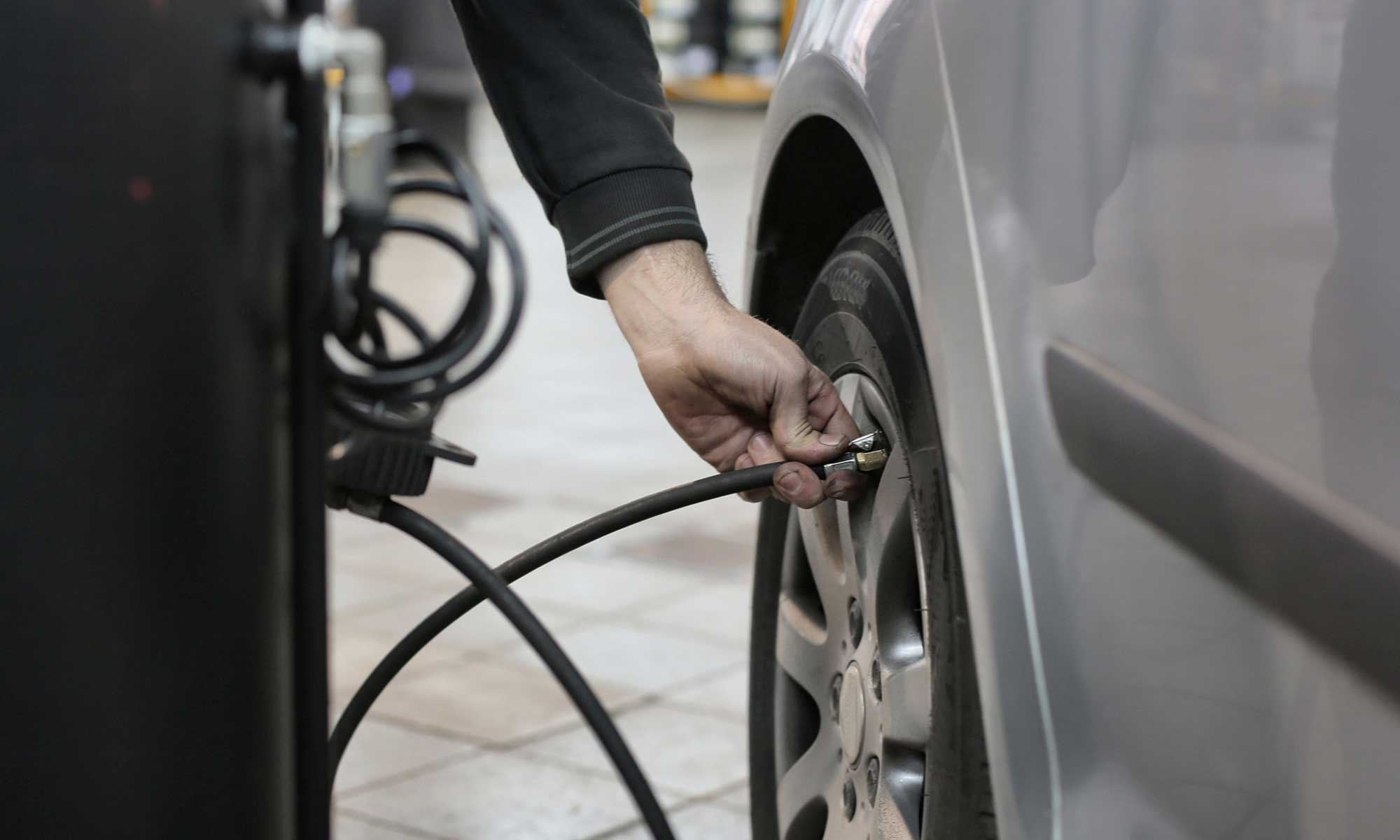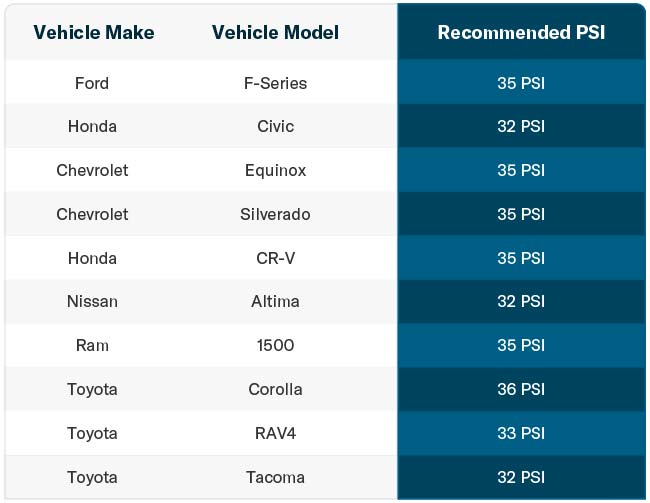¡Consigue esta oferta! Llama ahora.
Hable con un especialista en planes de protección de vehículos y obtenga $300 apagado cualquier nuevo contrato al instante.
Llamar 866-678-4172
o escanea el código a continuación


Todos los propietarios de vehículos han oído el término "PSI" en algún momento, pero además de saber que tiene algo que ver con sus neumáticos, muchos no están seguros de lo que significa realmente. En verdad, es muy importante que lo averigües porque tener los neumáticos de tu vehículo con el PSI correcto puede ayudarte a evitar las gasolineras al ayudar a aumentar el ahorro de combustible. por hasta 3%. Y al igual que rotar los neumáticosTambién es ideal para mejorar la seguridad de su vehículo en la carretera.
Como propietario de un taller de automóviles, escucho con demasiada frecuencia la pregunta "¿qué significa PSI en los automóviles?". A menudo, esa pregunta suele ir seguida de "¿qué PSI deberían tener mis neumáticos?". Ambas son excelentes preguntas y haré todo lo posible por responderlas aquí.
Lo primero es lo primero: PSI significa libras por pulgada cuadrada. En pocas palabras, es la unidad que se utiliza para medir la presión de aire dentro de los neumáticos. Puedes obtener una lectura precisa de la presión en PSI de tus neumáticos en este momento usando un manómetro de neumáticos, que puedes conseguir por aproximadamente $20.
El fabricante de su vehículo establecerá un nivel de PSI recomendado, que generalmente se encuentra en algún lugar Su manual del propietario, o en el marco de la puerta del lado del conductor. En promedio, esto suele estar alrededor de 35 PSI, medido cuando los neumáticos están fríos (es decir, cuando no ha conducido a altas velocidades recientemente). Independientemente de la PSI que requiera su vehículo, debe intentar mantenerlo a esta presión particular para un rendimiento óptimo.
Ya sea demasiado baja o demasiado alta, la presión incorrecta de los neumáticos puede afectar tanto Costo de propiedad y seguridadDespués de todo, el fabricante recomienda un PSI específico por alguna razón.
Neumáticos desinflados provocar una lista bastante larga de problemas, entre ellos:
Los neumáticos demasiado inflados no son tan malos, pero aún así generan problemas como:
Una vez que hayas encontrado la presión recomendada para tu vehículo, debes verificar la presión de cada uno de los neumáticos aproximadamente una vez a la semana (o al menos una vez al mes) y antes de cada viaje largo por carretera. Si parece que la presión de los neumáticos es baja, llénalos hasta alcanzar la presión recomendada. Si la presión es demasiado alta, deja que salga un poco de aire hasta que esté en su punto justo.
También es posible que los neumáticos tengan un número de PSI grabado en el flanco, pero no lo tomes en cuenta. Este es el número necesario para cumplir con la capacidad máxima de carga del neumático, no el adecuado para tu vehículo.
Vale la pena señalar que el fabricante de su vehículo puede recomendar una presión de PSI diferente para los neumáticos delanteros y traseros. También podrían darle cifras destinadas a cargas más pesadas o conducción de larga distancia. Por lo tanto, tenga en cuenta todos estos aspectos al cargar aire.
A continuación puede encontrar los niveles de PSI recomendados por el fabricante de algunos de Los vehículos más populares de Estados Unidos. Recuerde que estos números pueden cambiar entre modelos de un año a otro.
Utilice la siguiente tabla como guía aproximada, pero siempre consulte el manual del propietario o la calcomanía de la puerta del conductor para obtener los números exactos:

La respuesta a esta pregunta depende en última instancia de su vehículo, pero en el caso de los automóviles (en lugar de los SUV y las camionetas), puede estar seguro de que estará entre 30 y 35 psi. El mejor lugar para encontrar el número exacto que recomienda el fabricante será en el manual del propietario o en el marco de la puerta del lado del conductor. También podría estar en algún lugar dentro de la tapa del combustible, en la puerta de la guantera o debajo de la tapa del baúl en el caso de los automóviles más antiguos.
Si bien cualquier valor superior a la presión máxima recomendada por el fabricante es demasiado, los neumáticos soportan mejor el inflado excesivo que el insuficiente. Inflar los neumáticos en exceso de forma repetida provoca un manejo deficiente y un mayor desgaste en el centro de la banda de rodadura, por lo que siempre debe tener cuidado de no inflarlos más de lo debido. Si bien puede pensar que más aire es mejor, no hay beneficios en hacerlo.
Técnicamente, cualquier PSI que no sea la cantidad recomendada por el fabricante afecta la seguridad de su vehículo, pero es la falta de aire la que plantea la mayoría de los problemas. Las paredes laterales de un neumático con poca presión se flexionan excesivamente, lo que hace que más caucho entre en contacto con la superficie de la carretera. Esto hace que sea mucho más difícil girar y provoca que las paredes del neumático se deterioren. Las paredes del neumático son naturalmente mucho más delgadas que la banda de rodadura, por lo que no tardan mucho en desgastarse por completo. Si este tipo de falla del neumático ocurre repentinamente cuando está en la carretera, podría causar un accidente fatal.
Por más que intente mantener la presión de PSI correcta, nunca podrá evitar por completo el riesgo de pinchazos y reventones de neumáticos. La mayoría de los proveedores de garantía extendida excluye tus neumáticos como parte de una garantía integral, pero Endurance no es una de ellas. No solo todos los planes de cobertura Endurance te brindan asistencia en la carretera las 24 horas, los 7 días de la semana, transporte sustituto y costos de interrupción de viaje como estándar, sino que también obtienes un año gratis Beneficios de Endurance Élite—que incluyen beneficios adicionales como reparaciones y reemplazos de neumáticos.
Como el programa de protección de vehículos más completo del país, EnduranceVentaja™ También cubre $3,500 en costos de mantenimiento general por año. Desde controles de alineación hasta rotaciones de neumáticos, solo lleve su vehículo al taller de automóviles certificado por ASE más cercano, muéstreles un comprobante de su membresía Endurance y nosotros nos encargaremos del resto. Es una forma rentable de mantener sus neumáticos en óptimas condiciones y asegurarse de obtener el máximo rendimiento de combustible por su dinero.
Si desea obtener más información sobre nuestras garantías extendidas, no dude en ponerse en contacto con nosotros. Complete sus datos en línea ahora para obtener una Presupuesto gratuito y sin compromiso, o regrese a nuestro Centro de aprendizaje para obtener información, asesoramiento y Otros artículos útiles.

Estamos aquí para asegurarnos de que obtenga la protección EV más completa. Por eso nos hemos asociado con Xcelerate automático para ofrecerle una cobertura Tesla transparente y confiable.
¿Quiere que nos comuniquemos con usted acerca de la cobertura XCare para su Tesla?



¡Llama y obtén un descuento de $300 en cualquier plan nuevo!
Al hacer clic en el botón, acepta que Endurance utilice tecnología automatizada para llamarlo, enviarle un correo electrónico y enviarle mensajes de texto utilizando la información de contacto anterior, incluido su número de teléfono móvil, si se proporciona, con respecto a la protección del automóvil o, en California, el seguro contra averías mecánicas. También acepta el Endurance política de privacidad y Términos y condiciones. El consentimiento no es una condición de compra y puede retirar el consentimiento en cualquier momento. Se pueden aplicar tarifas por mensajes y datos.
Hable con un especialista en planes de protección de vehículos y obtenga $300 apagado cualquier nuevo contrato al instante.
Llamar 866-678-4172
o escanea el código a continuación



Simplemente complete la información a continuación y le daremos seguimiento rápidamente con su cotización gratuita y sin compromiso.
Al hacer clic en el botón, acepta que Endurance utilice tecnología automatizada para llamarlo, enviarle un correo electrónico y enviarle mensajes de texto utilizando la información de contacto anterior, incluido su número de teléfono móvil, si se proporciona, con respecto a la protección del automóvil o, en California, el seguro contra averías mecánicas. También acepta el Endurance política de privacidad y Términos y condiciones. El consentimiento no es una condición de compra y puede retirar el consentimiento en cualquier momento. Se pueden aplicar tarifas por mensajes y datos.

Para hablar con un especialista en planes de protección de vehículos y guardar $300
Escanee el código a continuación
Desde que abrió su taller de reparación certificado por ASE en 1979, Reparaciones automotrices AyersNikki ha dedicado gran parte de su vida profesional a brindar servicios de reparación de automóviles confiables y de confianza en su comunidad local. Su equipo de técnicos certificados ha ayudado a miles de propietarios de automóviles durante más de 40 años ofreciendo diversos servicios, desde reparaciones generales hasta vehículos averiados.